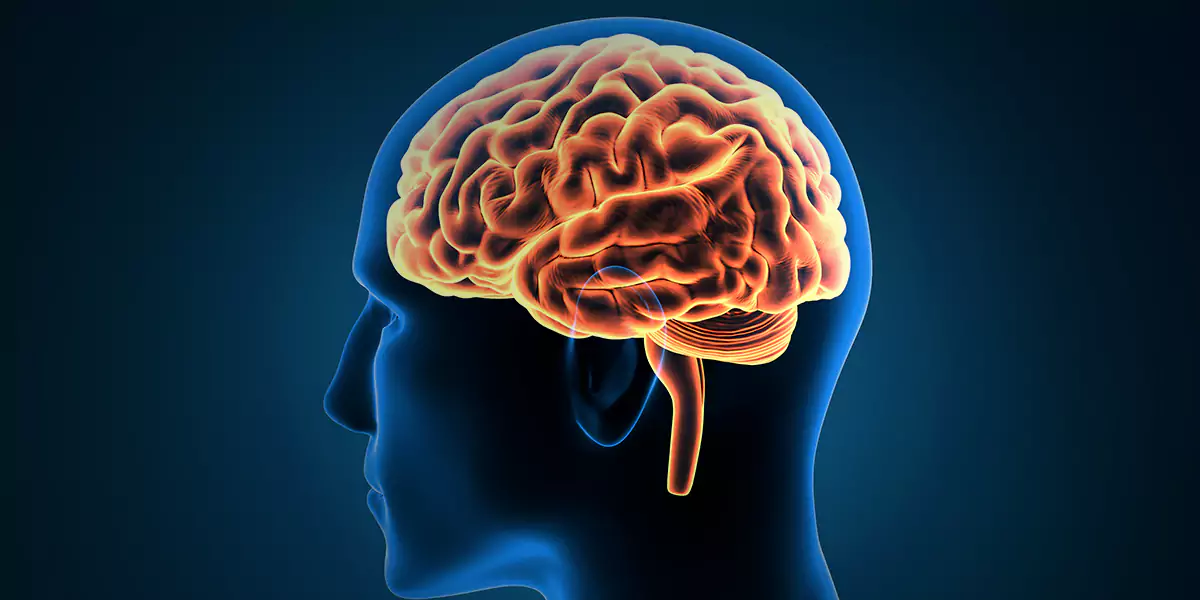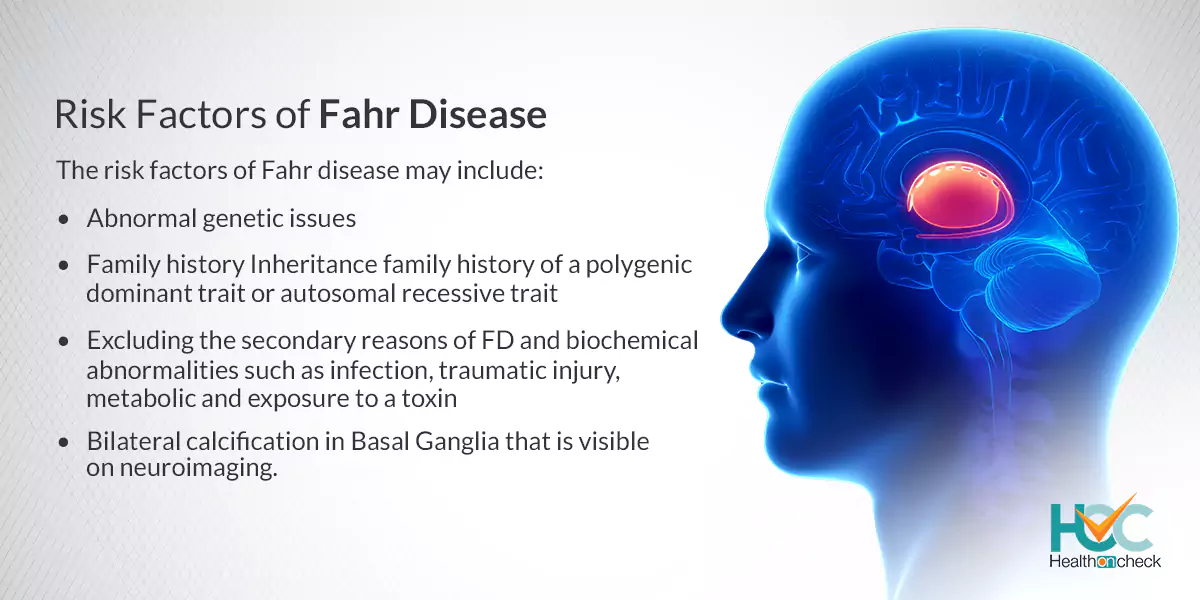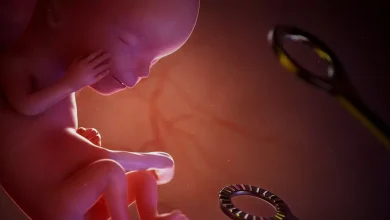All about Fahr Disease

What is Fahr Disease ((FD)?
Fahr disease is also known as FD is a quite rare genetically dominant, neurodegenerative disease that is caused because of an idiopathic bilateral gathering of calcium in the area where striopallidodentate is located. FD falls under the category heterogeneous group of diseases in which the calcium gets deposited in the basal ganglia and other cerebral areas, usually the deep cerebellar nuclei. The signs of FD can be deteriorated motor function, seizures, headache, dementia, spasticity, eye impairments, dysarthria, and athetosis.
What are the Types of Fahr Disease?
There are no types of Fahr disease

What are the Symptoms of Fahr Disease?
The Symptoms of Fahr disease may include
The most common symptoms of FD are those related to movement, but up to a third of people with the disorder also experience psychiatric symptoms. Common symptoms of FD include
– Slow body movements
– Muscles become rigid
– Tremors in muscle
– Dementia
– Problems while Walking
– Tensing
– Difficulty while swallowing food
– Speech Impairment
– Constant Headache
– Dizziness
– Confusion
– Loss of Memory
– Concentration problems concentrate
– Seizures
– Bladder control issue
– Disconnected from reality (psychosis)
What are the Causes of Fahr Disease (FD)?
Fahr disease generally occurs because of abnormal changes in the body (mutations) in one of many genes. Mostly a gene known as SLC20A2, carries instructions for producing a protein vital to carry phosphate into brain cells. This mutation leads to augmented phosphate levels in the bloodstream, which, leads to inpromotes calcium deposits inside the cells.
Fahr disease can also be caused by mutations in other genes, like PDGFRB, though it is not yet clear how it causes calcification. No information about genetic mutation is available in about half of PFBC cases, but researchers believe these cases occur because of mutations that were not yet identified.
How Fahr Disease is Diagnosed?
The first sign of fahr disease is if the person shows s neurological symptoms along with a family history of fahr disease. The process of diagnosing diagnostic will try to rule out other possible reasons for the signs and symptoms and detect the characteristic signs of FD. The tests to diagnose fahr disease may include:
Physical and neurological tests: Samples of your blood, urine, or stool may be checked in a Laboratory to rule out any other causes, such as metabolic disorders, infections, or exposure to a toxic environment.
Magnetic resonance imaging (MRI): MRI and a few others imaging scans will be done to examine the pattern of brain degeneration characteristic of FFI.
Genetic Test: This testing is done to examine gene mutations associated with FD
What Causes Fahr’s Disease?
FD is caused by abnormal changes (mutations) in one of several different genes. Most commonly, the affected gene is SLC20A2, a gene that carries instructions for making a protein vital in the transport of phosphate into brain cells. The mutation leads to elevated phosphate levels in the bloodstream, which, in turn, promotes calcium deposits inside the cells.
The disorder may be caused by mutations in other genes, including PDGFRB, although it is unclear how they cause calcification. There is no known genetic mutation in about half of PFBC cases, but scientists believe these cases are caused by mutations that haven’t yet been identified.

What are the Risk Factors of Fahr Disease?
The risk factors of Fahr disease may include
– Abnormal genetic issues
– Family history Inheritance family history of a polygenic dominant trait or autosomal recessive trait.
– Bilateral calcification in Basal Ganglia that is visible on neuroimaging.
– Excluding the secondary reasons of FD and biochemical abnormalities such as infection, traumatic injury, metabolic and exposure to a toxin
What are the Treatment Options for Fahr Disease?
There is no permanent cure for FD and no treatment can avert or reverse the development of its symptoms. Treatment options mainly focus on easing the symptoms and preventing further complications. A few possible treatments may include:
– To control seizures are given anticonvulsant medications
– To deal with psychiatric symptoms including anxiety, depression, or obsessive-compulsive disorder (OCD) antidepressants or other medications are given
– Drugs are given to treat bladder-control disorders
– A doctor will regularly monitor your neurological and mental health symptoms and will treat you accordingly
Living with Fahr Disease
You should first acknowledge the fact that you are the only one who is suffering from the disorder alone. Reach out to people suffering from FD and give and receive emotional support along with practical from someone who has lived through a similar experience and is trained to give support and advice to tackle the mental issues that come with this disorder. Share your feelings with close friends and family members and you will much better mentally.
Whom to Consult?
If you notice signs and symptoms of Fahr disease in you or any of your family members, or a friend then immediately consult a doctor who is specialized in this field. at first, he will ask you some questions and refer you to go for some tests. If it’s Fahr Disease then he will start treatment and you have to follow it religiously.




